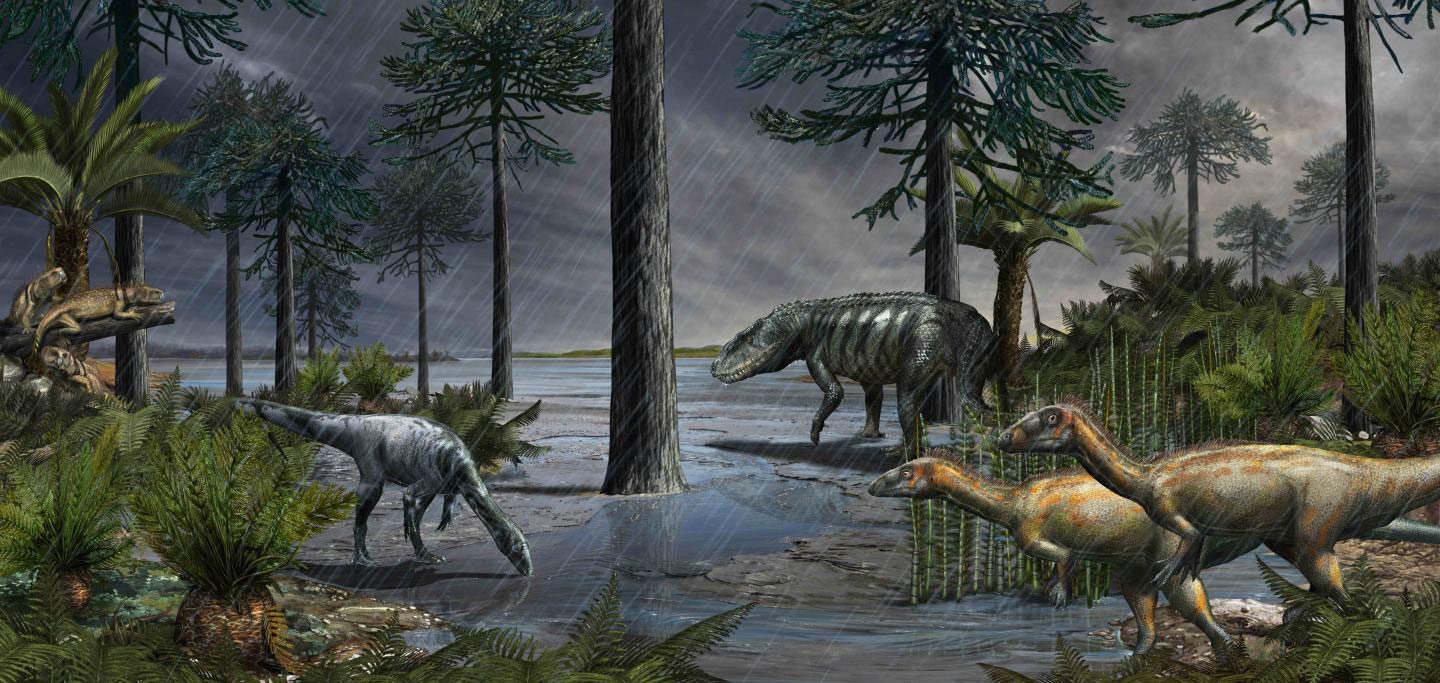
In the new paper, published today in Nature Communications, evidence is provided to match the two events - the mass extinction, called the Carnian Pluvial Episode, and the initial diversification of dinosaurs.
Dinosaurs had originated much earlier, at the beginning of the Triassic Period, some 245 million years ago, but they remained very rare until the shock events in the Carnian 13 million years later.
The new study shows just when dinosaurs took over by using detailed evidence from rock sequences in the Dolomites, in north Italy - here the dinosaurs are detected from their footprints.
First there were no dinosaur tracks, and then there were many. This marks the moment of their explosion, and the rock successions in the Dolomites are well dated. Comparison with rock successions in Argentina and Brazil, here the first extensive skeletons of dinosaurs occur, show the explosion happened at the same time there as well.
Lead author Dr Massimo Bernardi, Curator at MUSE and Research associate at Bristol's School of Earth Sciences, said: "We were excited to see that the footprints and skeletons told the same story. We had been studying the footprints in the Dolomites for some time, and it's amazing how clear cut the change from 'no dinosaurs' to 'all dinosaurs' was."
The point of explosion of dinosaurs matches the end of the Carnian Pluvial Episode, a time when climates shuttled from dry to humid and back to dry again.
It was long suspected that this event had caused upheavals among life on land and in the sea, but the details were not clear. Then, in 2015, dating of rock sections and measurement of oxygen and carbon values showed just what had happened.
There were massive eruptions in western Canada, represented today by the great Wrangellia basalts - these drove bursts of global warming, acid rain, and killing on land and in the oceans.
Co-author Piero Gianolla, from the University of Ferrara, added: "We had detected evidence for the climate change in the Dolomites. There were four pulses of warming and climate perturbation, all within a million years or so. This must have led to repeated extinctions."
Professor Mike Benton, also a co-author, from the University of Bristol, said: "The discovery of the existence of a link between the first diversification of dinosaurs and a global mass extinction is important."
"The extinction didn't just clear the way for the age of the dinosaurs, but also for the origins of many modern groups, including lizards, crocodiles, turtles, and mammals - key land animals today."
Publication: Massimo Bernardi, et al., "Dinosaur diversification linked with the Carnian Pluvial Episode," Nature Communications, volume 9, Article number: 1499 (2018) doi:10.1038/s41467-018-03996-1



Comment: For more on the upheaval our planet has witnessed and the profound changes that were to follow, see:
- Of Flash Frozen Mammoths and Cosmic Catastrophes
- Comets and the Bronze Age Collapse
- Witches, Comets and Planetary Cataclysms
- The Younger Dryas Impact Event and the Cycles of Cosmic Catastrophes - Climate Scientists Awakening
- Early humans witnessed global cooling, warming, and massive fires from comet debris impacts says major study
See Also: